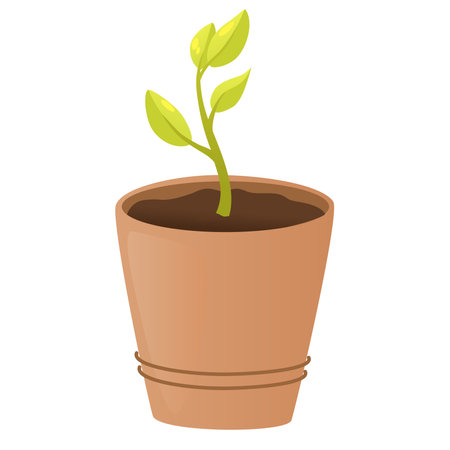1. Choosing the Right Rocks on a Budget
Creating a stylish rock garden doesn’t have to break the bank. With a little creativity and resourcefulness, you can find beautiful rocks for your landscaping project without overspending. Heres how to source the right rocks while keeping your budget in check.
Buy in Bulk
If youre planning a larger rock garden, buying rocks in bulk from local landscaping suppliers or garden centers can save you a significant amount of money compared to buying small bags from big-box stores. Many suppliers offer discounted rates for bulk purchases, and you might even be able to negotiate better prices if youre buying a large quantity.
Visit Local Quarries
Local quarries are another great source for affordable rocks. Many allow direct purchases and may offer a wide variety of stone types at lower prices than retail stores. Plus, you’ll often find unique shapes and colors that can make your garden stand out.
Repurpose Materials from Your Own Yard
Before spending any money, take a walk around your property. You might already have usable materials like stones, bricks, or even broken concrete pieces that can be repurposed into decorative elements for your rock garden. Not only is this cost-effective, but it’s also environmentally friendly.
Comparison of Rock Sourcing Options
| Source | Cost | Availability | Pros | Cons |
|---|---|---|---|---|
| Bulk Purchase from Suppliers | $$ | High | Cost-effective for large projects, consistent sizes | Requires transport or delivery fees |
| Local Quarries | $-$$ | Moderate to High | Unique variety, lower prices than retail | May need tools or help with loading |
| Your Own Yard | $ (Free) | Varies | No cost, eco-friendly, personalized look | Limited quantity and type available |
Pro Tip:
If transportation is an issue, consider borrowing a truck from a friend or renting one from a local hardware store for a few hours—it could still be cheaper than paying for delivery.
Sourcing rocks wisely is the first step toward building an eye-catching rock garden that fits both your vision and your budget.
2. Low-Cost Ground Covers and Plants
Choosing the right plants for your rock garden can make a big difference in both looks and long-term savings. By selecting drought-tolerant and native species, you’ll cut down on watering, trimming, and overall maintenance—without compromising on beauty.
Why Drought-Tolerant and Native Plants?
Drought-tolerant plants are perfect for rock gardens because they thrive in dry conditions and often require less attention. Native plants are already adapted to your local climate, which means they’re more likely to survive and flourish with minimal care.
Top Budget-Friendly Ground Covers
Ground covers fill in spaces between rocks, help prevent weeds, and add color and texture. Here are some low-cost options that do well in American climates:
| Plant Name | Type | Water Needs | Best For USDA Zones |
|---|---|---|---|
| Ice Plant (Delosperma cooperi) | Succulent ground cover | Low | 5-10 |
| Creeping Thyme (Thymus serpyllum) | Herbaceous ground cover | Low to moderate | 4-9 |
| Sedum (Sedum spp.) | Succulent ground cover | Very low | 3-9 |
| Blue Star Creeper (Isotoma fluviatilis) | Flowering ground cover | Moderate | 5-9 |
Native Plants That Work Well in Rock Gardens
If youre looking for native options, try these U.S.-friendly picks that offer great value and visual appeal:
- Purple Coneflower (Echinacea purpurea): A hardy perennial that attracts pollinators and handles dry soil well.
- Black-eyed Susan (Rudbeckia hirta): Bright yellow blooms that return every year with minimal water needs.
- California Poppy (Eschscholzia californica): Ideal for Western states; requires very little water once established.
- Lavender (Lavandula spp.): Not only drought-tolerant but also fragrant and deer-resistant.
Tips for Saving Even More on Plants
Start Small, Let Them Spread
You don’t need to buy a lot of plants at once. Choose varieties known for spreading, like sedum or creeping thyme, and give them time to fill out the space naturally.
Buy Local or Swap with Neighbors
Nurseries that specialize in native plants often have seasonal sales. You can also join local gardening groups where members swap clippings or extra plants—saving money while building community.
Use Mulch Strategically
A layer of mulch around new plants helps retain moisture and reduce weed growth, giving your budget-friendly garden a polished look without extra cost.
Selecting the right mix of low-cost ground covers and native plants will not only enhance the visual appeal of your rock garden but also reduce ongoing costs—making it a win-win for your wallet and your yard.

3. DIY Rock Garden Layout and Design Tips
Creating a stylish rock garden on a budget is absolutely doable, especially when you take the DIY route. You don’t need to be a landscaping expert to build an eye-catching space—just a little creativity and some planning can go a long way. Here are some easy-to-follow tips that will help you design your own rock garden layout without breaking the bank.
Layer Textures for Visual Interest
Mixing different types of rocks, plants, and mulch can add depth and texture to your garden. Think of it like decorating a room—you want variety, but not clutter. Combine smooth river rocks with jagged stones or gravel, and add in drought-tolerant plants like succulents or ornamental grasses for contrast.
Texture Combination Ideas:
| Rock Type | Plant Pairing | Effect |
|---|---|---|
| River Rocks | Sedum or Echeveria | Soft and flowing look |
| Lava Rocks | Agave or Yucca | Dramatic desert vibe |
| Pea Gravel | Creeping Thyme | Natural ground cover feel |
Create Natural Focal Points
You can make your rock garden stand out by choosing one or two focal points. This could be a larger boulder, a colorful plant, or even a DIY stone sculpture. Place it slightly off-center to create visual balance—this technique is known as the “rule of thirds” in design.
Use Your Yard’s Natural Contours
Instead of leveling out your yard, work with what you’ve got. Slopes and uneven areas can actually enhance your rock garden’s natural beauty. Use larger stones to stabilize slopes or create terraced planting beds. This approach saves money on grading and gives your garden more character.
Contour-Based Layout Tips:
- Gentle slopes: Add cascading ground covers like creeping phlox.
- Steep areas: Stack flat rocks to form mini retaining walls.
- Flat spaces: Create rock “islands” bordered by mulch or low-growing plants.
Sketch Before You Start
A simple sketch goes a long way in avoiding costly mistakes. Plot out where you want each rock, plant, and path to go. Use free online tools or just pencil and paper—whatever works best for you. This step helps you stay organized and makes shopping for materials easier.
Keep It Low Maintenance
Select hardy plants that thrive in your local climate and don’t require much water or care. Native perennials, succulents, and ornamental grasses are great choices for most U.S. regions and pair beautifully with rocks for that effortless natural look.
By combining these DIY layout ideas with smart material choices, you can craft a rock garden that looks high-end without the high cost—all while adding lasting beauty to your outdoor space.
4. Upcycling and Repurposing in Your Garden
When it comes to building a stylish rock garden on a budget, upcycling and repurposing old or unused items can save you money and give your space a one-of-a-kind charm. By thinking creatively, you can turn everyday objects into eye-catching garden features that blend beautifully with natural stone elements.
Get Creative With What You Have
Take a look around your garage, shed, or even your neighbor’s curb on trash day—you might find hidden treasures perfect for your garden. Old pots, chipped dishes, broken concrete slabs, or even rusty metal containers can be transformed into decorative or functional pieces.
Popular Items to Repurpose in Rock Gardens
| Item | How to Use It |
|---|---|
| Old Clay Pots | Use as planters or lay them sideways among rocks for a rustic effect. |
| Broken Concrete | Stack to mimic natural stone walls or use as stepping stones. |
| Reclaimed Wood | Create borders, benches, or small raised beds around your rock garden. |
| Metal Buckets or Tubs | Repurpose as large planters or water features. |
| Used Bricks | Line pathways or define planting zones within the rock landscape. |
Add Character Without Spending Much
The beauty of upcycling is that each piece tells a story. That cracked birdbath? It could become the centerpiece of a succulent arrangement. A pile of leftover gravel? Perfect for filling gaps between stepping stones. Not only do these elements keep costs down, but they also make your garden feel more personal and creative.
Pro Tip:
If youre unsure where to start, visit local salvage yards, thrift stores, or online marketplaces like Craigslist and Facebook Marketplace. Many people give away materials for free—you just have to haul them!
Your rock garden doesn’t need to rely on expensive new materials. With a little imagination and some DIY spirit, you can create an outdoor space full of character while keeping your wallet happy.
5. Maintenance Tips for Long-Term Savings
Keeping your budget-friendly rock garden looking great doesn’t have to mean spending a lot of money or time. With just a few simple maintenance habits, you can protect your investment and enjoy a stylish, low-cost landscape all year long. Here are some easy tips to help you stay on top of upkeep while saving money in the long run.
Mulching: Your Garden’s Best Friend
Mulch isn’t just for flower beds—it works wonders in rock gardens too. A thin layer of organic mulch (like bark or wood chips) around plants helps retain moisture, suppress weeds, and regulate soil temperature. This means less watering and fewer plant replacements down the road.
Benefits of Mulching
| Benefit | How It Saves Money |
|---|---|
| Moisture Retention | Reduces watering needs |
| Weed Control | Less time and fewer products spent on weed removal |
| Soil Insulation | Protects plant roots from extreme temperatures |
Stay Ahead of Weeds
Weeds are not only unsightly—they also steal nutrients and water from your plants. The good news is that regular weeding, especially right after it rains when the soil is soft, makes the job easier and faster. You can also use landscape fabric under rocks to prevent most weeds from popping up in the first place.
Quick Weed Control Tips:
- Check weekly and pull small weeds before they spread.
- Use a hand weeder for precision in tight spaces.
- Add mulch or gravel in bare spots to discourage growth.
Seasonal Check-Ups Keep Costs Down
A little attention each season can go a long way in preventing bigger problems later. Walk through your rock garden every few months to check for signs of erosion, damaged plants, or shifting stones. Fixing small issues early helps avoid more expensive repairs down the line.
Seasonal Maintenance Checklist:
| Season | Task |
|---|---|
| Spring | Remove winter debris, refresh mulch, inspect plant health |
| Summer | Monitor irrigation needs, check for pests, trim overgrowth |
| Fall | Cut back perennials, clear fallen leaves, prep for cold weather |
| Winter | Watch for frost damage, ensure drainage is working properly |
By sticking to these simple routines, you’ll keep your rock garden looking polished without breaking the bank. Smart maintenance means less stress—and more time enjoying your beautiful outdoor space.


